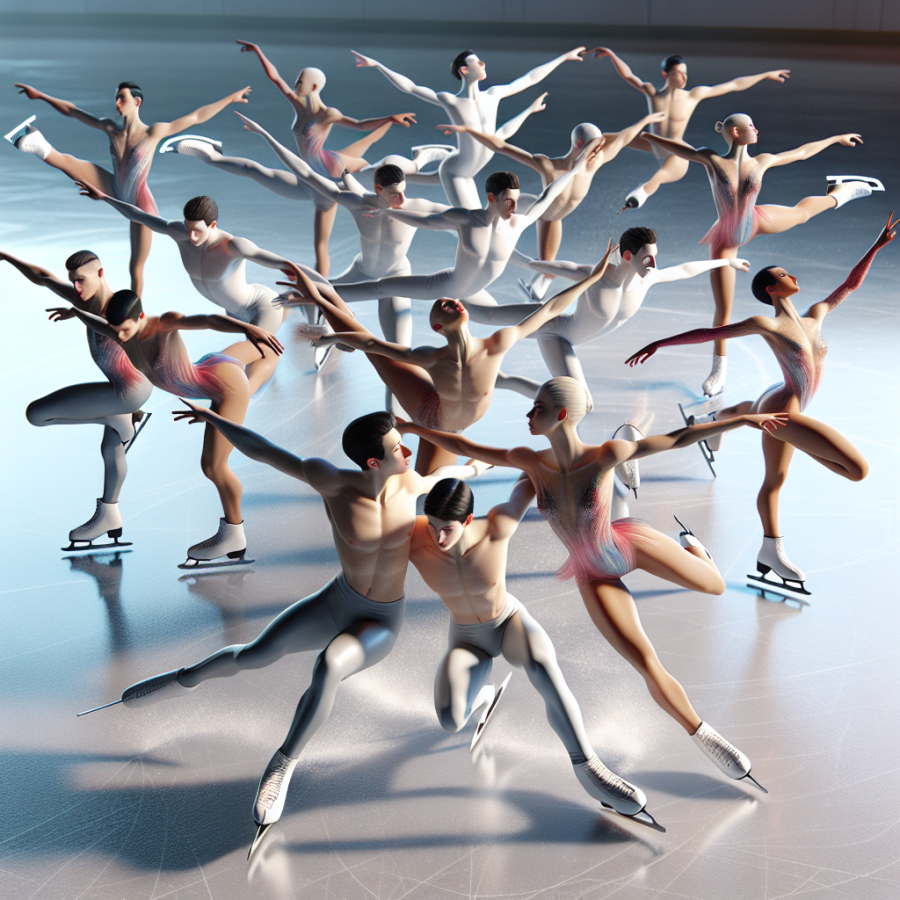Achieving Unity on Ice: The Essentials of Synchronized Skating Teamwork
Synchronized skating, a unique and visually stunning discipline, relies heavily on the flawless execution of intricate maneuvers by a team moving as one. The key to a successful synchronized skating team lies in the unwavering unity that skaters must develop. This calls for an amalgamation of physical precision, mental synchronization, and emotional connection.
First and foremost, physical precision is crucial in synchronized skating. Each skater must be acutely aware of their body movements – every turn, every jump, and every step must be mirrored perfectly with their teammates. This requires rigorous training to ensure that muscle memory is in sync with the formation and timing of the entire group.
To achieve mental synchronization, communication becomes an indispensable factor. While practicing routines, skaters must use verbal and non-verbal cues to stay aligned with each other. Mental maps of routines, counting aloud and even watching for peripheral cues from teammates helps in maintaining the precise spacing and timing that synchronized skating demands.
But achieving unity on ice isn't solely about physical and mental alignment; the emotional connection among team members cannot be understated. Teams often partake in team-building activities to strengthen trust and camaraderie. The emotional bond that forms off the ice translates into a more cohesive performance on the ice because skaters are more attuned to one another’s presence and energy.
Another essential is the role of the coach or choreographer, who must craft a program that not only showcases the skills of the team but also accounts for the uniformity and strength of the group as a whole. They must discern the right balance of choreographic elements to ensure that the team can perform as a singular unit rather than a collection of individuals.
Moreover, the mastering of formations such as blocks, wheels, lines, and circles require impeccable spatial awareness and precise timing. These formations should be executed with seamless transitions, which is achieved through drilling the steps and shapes repeatedly. The goal is that the individual skater is not identifiable when the team performs.
In the end, achieving unity on ice in synchronized skating is akin to conducting a complex orchestra where every skater’s move is a note contributing to a harmonious melody. It is the sum of all these facets – physical precision, mental synchronization, emotional connection, coaching strategy, and rigorous practice – that allows a synchronized skating team to glide as one entity, captivating audiences with their harmonious and synchronous artistry.
Read also:
The Evolution of Hockey: From Its Origins to Present Day
The Intricacies of Blending Athleticism with Artistry in Synchronized Skating
Synchronized skating, often described as a ballet on ice, is not only a sport that demands exceptional athletic prowess but also requires an exquisite sense of artistry. The complexities involved in blending both elements extend from the individual skater to the team as a cohesive unit, epitomizing the sport's unique challenge and beauty.
In synchronized skating, athleticism is a fundamental element. Skaters must exhibit extraordinary strength, endurance, and agility to perform intricate maneuvers. The precision required for synchronized movements, such as blocks, wheels, circles, and lines, necessitates a high level of physical fitness and technical skill. Each skater's ability to execute jumps, spins, and footwork with exact timing and spatial awareness is critical to maintaining the integrity of the formation. The synchronized nature of the discipline means that any misstep can be instantly obvious and detrimental to the performance, emphasizing the necessity for athleticism in practice and performance.
However, the artistry in synchronized skating is equally as significant. It is the soulful expression of themes, emotions, and stories that elevates a technical routine into a memorable performance. Graceful and emotive movements are woven into the technical elements, creating a tapestry of visual storytelling that captivates audiences and judges alike. The skaters use their facial expressions, hand gestures, and body language to enhance the narrative of their routine, thereby engaging with the music and each other to create a harmonious display.
The costumes, music selection, and choreography are integral to the artistic aspect of synchronized skating. They set the atmosphere and help in conveying the chosen theme of the routine. While skaters must be supremely athletic to perform the required elements, they must also be artists, interpreting their music and choreography to make an emotional connection with onlookers.
Striking a balance between athleticism and artistry is a continuous challenge in synchronized skating. Coaches and choreographers play pivotal roles in designing programs that harness the team's strengths and agility while also showcasing their expressive capabilities. The rigorous training regime for synchronized skaters includes not just physical conditioning but also workshops that can involve acting and dance to help skaters hone their performance and artistic expression.
During a synchronized skating routine, the fusion of athleticism and artistry culminates in an almost otherworldly spectacle. When a team hits this sweet spot, their performance transcends the technical scoring to leave a lasting impression of unity, emotion, and sheer skating joy.




